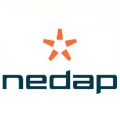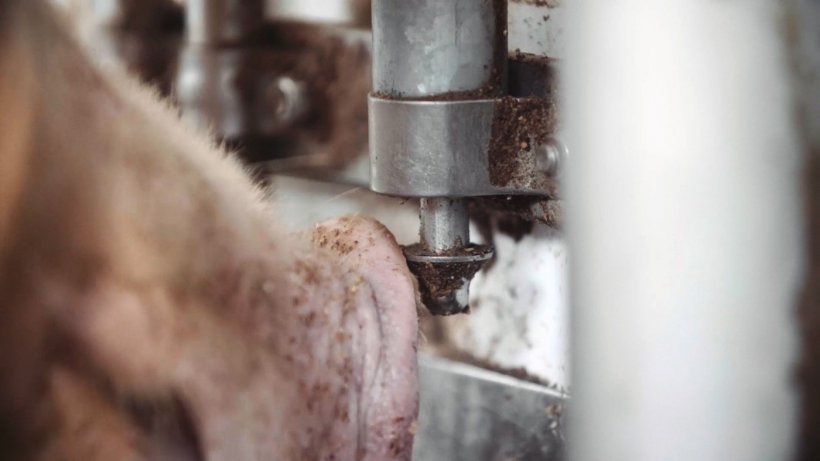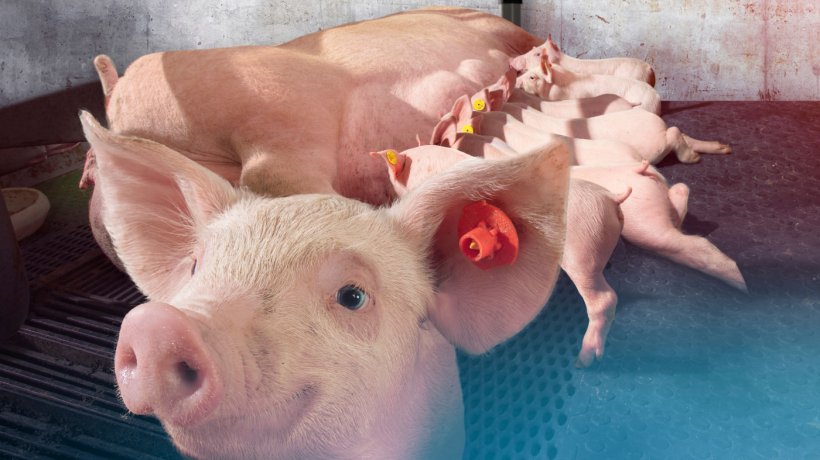
Each day, you navigate the challenges of pig farming – doing more work with seemingly less labor, all while trying to improve pig performance. Being profitable requires you to be efficient, and it starts with taking control of lactating sow feed intake.

“When you boost feed intake during lactation, you see faster farrowing recovery, higher milk yield and heavier piglets at weaning,” says Chiel van Lenthe, product manager at Nedap Livestock Management. “Automated feeding systems allow you to control feed intake during lactation, which drives sow and piglet performance with less time and cost.”
Here are four reasons to take control of sow feed intake with automated feeding:
1. Optimize sow body condition
Lactation is the most demanding production phase for a sow. They need up to three times more feed during lactation than gestation.
“Automated feeding can help you easily meet the increased nutritional needs of a lactating sow by controlling the frequency and volume of feed and providing on-demand feeding,” says van Lenthe. “By maximizing feed intake, a sow gets the energy she needs to recover from farrowing, support body condition and produce sufficient milk to feed her growing litter.”
Another benefit of optimal sow body condition is better breed back rates. Studies have shown that feeding sows several small rations throughout the day, as is possible with automated feeding and on-demand feeding, helps keep sows at optimal body condition to breed back sooner for fewer non-productive days.[1]
2. Improve litter size
When sow nutritional needs are met, you can also improve subsequent litter sizes.
“We’ve seen operations with automated systems increase litter size by one piglet per sow per year,” says van Lenthe. “Even for a smaller operation, an increase in litter size can add up to a sizable increase in additional revenue.”
Automated feeding delivers feed at regular intervals, stimulating sow appetite and increasing feed intake – ensuring sows nutritional needs are met. When nutritional needs are met, body condition is optimized and litter size is maximized.

3. Increase weaning weights
“Automated feeding systems maximize feed intake, so the sow receives optimal nutrition to produce sufficient, consistent milk to feed her growing litter,” says van Lenthe. “As a result, some operations we work with have reported increases of over 0,75 kilograms (1.5 pounds) in weaning weight.”
Increased weaning weight has a positive influence on pig growth and feed efficiency from weaning to market.[2] Additionally, heavier piglets are more easily bred when they reach maturity and stay bred compared to piglets with lower weaning weights.[3]
4. Reduce feed and labor costs
Feed costs alone may account for up to 65-70% of your operational costs.[4] On top of that, it can be time-consuming to deliver feed to sows several times a day and monitor intake. But you can keep these costs in check with automated feeding.
“Some automated feeding systems have ‘activators’ which deliver feed as the sow demands,” says van Lenthe. “The sow triggers the activator with her snout to receive a small portion of fresh feed, reducing feed waste and feed delivery and monitoring costs. Some operations we work with have seen a 4% reduction in feed wastage as a result of the on-demand system.”
Automated alerts are sent when a sow hasn’t “asked” for feed by triggering the activator for a defined period, signaling a reduction in feed intake. Barn managers don’t have to monitor feeders for uneaten feed – allowing them to focus their time where it’s needed most.
[1] Shannon, Marcia, Ph.D. 2011. Nutrition and Feeding for Optimum Reproductive Performance. Accessed June 16, 2020. https://anrs.oregonstate.edu/sites/agscid7/files/anrs/swinenutriforreprodperf.pdf
[2] Muirhead, M. R., T. J. L. Alexander, Dr. J. Carr (Ed). 2013. Managing Pig Health: A Reference for the Farm - 2nd Edition. Accessed June 16, 2020. https://thepigsite.com/genetics-and-reproduction/weaning/maximum-productivity
[3] Stalder, Ken, Ph.D. 2008. Monitoring & Maintaining Proper Condition in Gestating Sows. Accessed June 16, 2020. https://www.ipic.iastate.edu/presentations/StalderGestateConditionSB108.pdf
[4] Pork Checkoff. 2020. Hog-Corn Price Ratio. Accessed June 16, 2020. https://www.pork.org/facts/stats/costs-and-prices/hog-corn-price-ratio/
July 1, 2020 - Nedap





